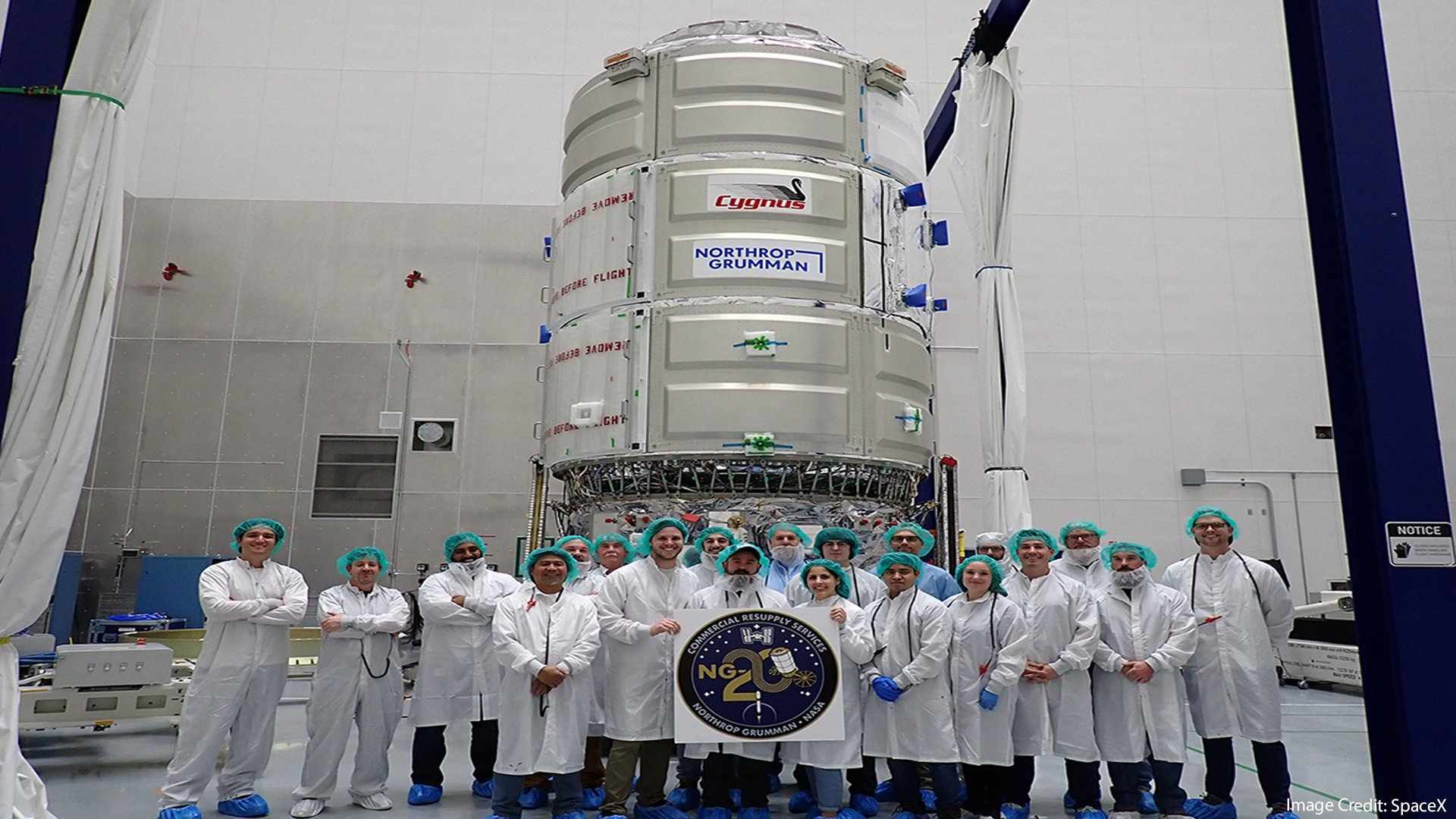
SpaceX, Northrop Grumman Corp. and NASA are targeting 12:29 p.m. EST on Monday, 29 January for the launch of the next Cygnus cargo mission (NG-20) to the International Space Station (ISS). Laden with more than 8,200 pounds (3,700 kilograms) of equipment, payloads and supplies for the incumbent Expedition 70 crew, the cargo ship—named in honor of physician, instructor pilot, space medicine fellow and NASA astronaut Dr. Patricia “Patty” Hilliard-Robertson (1963-2001)—will be robotically captured by the 57.7-foot-long (17.6-meter) Canadarm2 early Wednesday, 31 January to kick off a three-month-plus stay aboard the sprawling orbital complex.
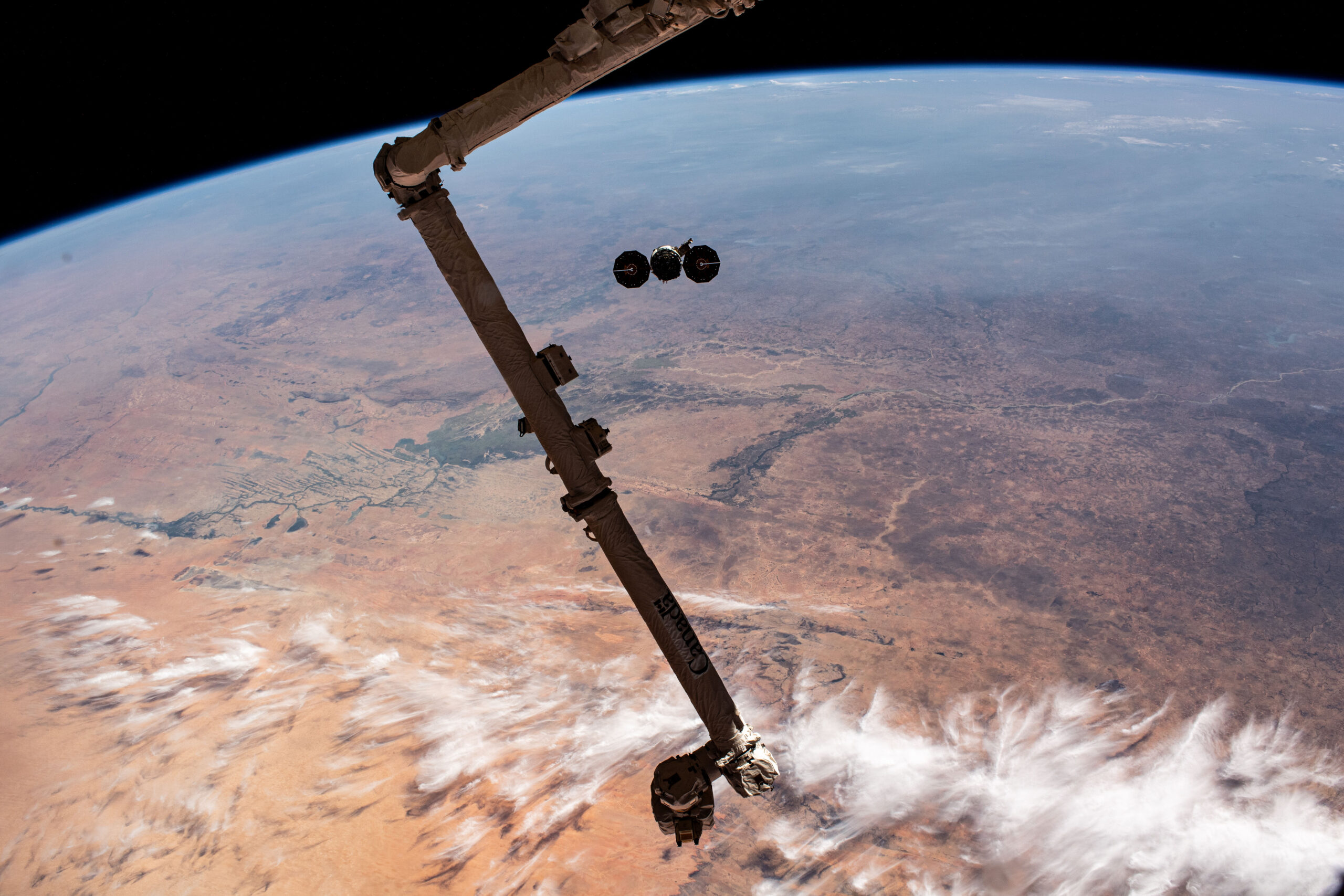
Overseeing Cygnus’ arrival will be Expedition 70 astronauts Jasmin Moghbeli and Loral O’Hara, both of whom will be positioned inside the station’s multi-windowed cupola. Yesterday, the pair undertook computer-based Robotics On-Board Training (ROBoT) to prepare for their respective roles next Wednesday, which will see Moghbeli (prime) and O’Hara (backup) use Canadarm2 to grapple Cygnus at about 3:35 a.m. EST, after which ground controllers will command the arm to pre-position and berth the cargo ship at the Earth-facing (or “nadir”) port of the Unity node around 5 a.m. EST.
Interestingly, with the on-board presence of AxiomSpace, Inc.’s four-person Ax-3 crew—Commander Mike Lopez-Alegria of the United States with Spanish heritage, Pilot Walter Villadei of Italy and Mission Specialists Marcus Wandt of Sweden with Norwegian ancestry and the first national space traveler from Türkiye, Alper Gezeravcı—this will mark the first time that a team of non-professional astronauts have been on the station during the approach, rendezvous and docking or berthing of an uncrewed cargo vehicle. The quartet, who launched to the ISS atop a Falcon 9 booster on 18 January, are slated to return to Earth for a parachute-assisted splashdown off the Florida Coast on 3 February.
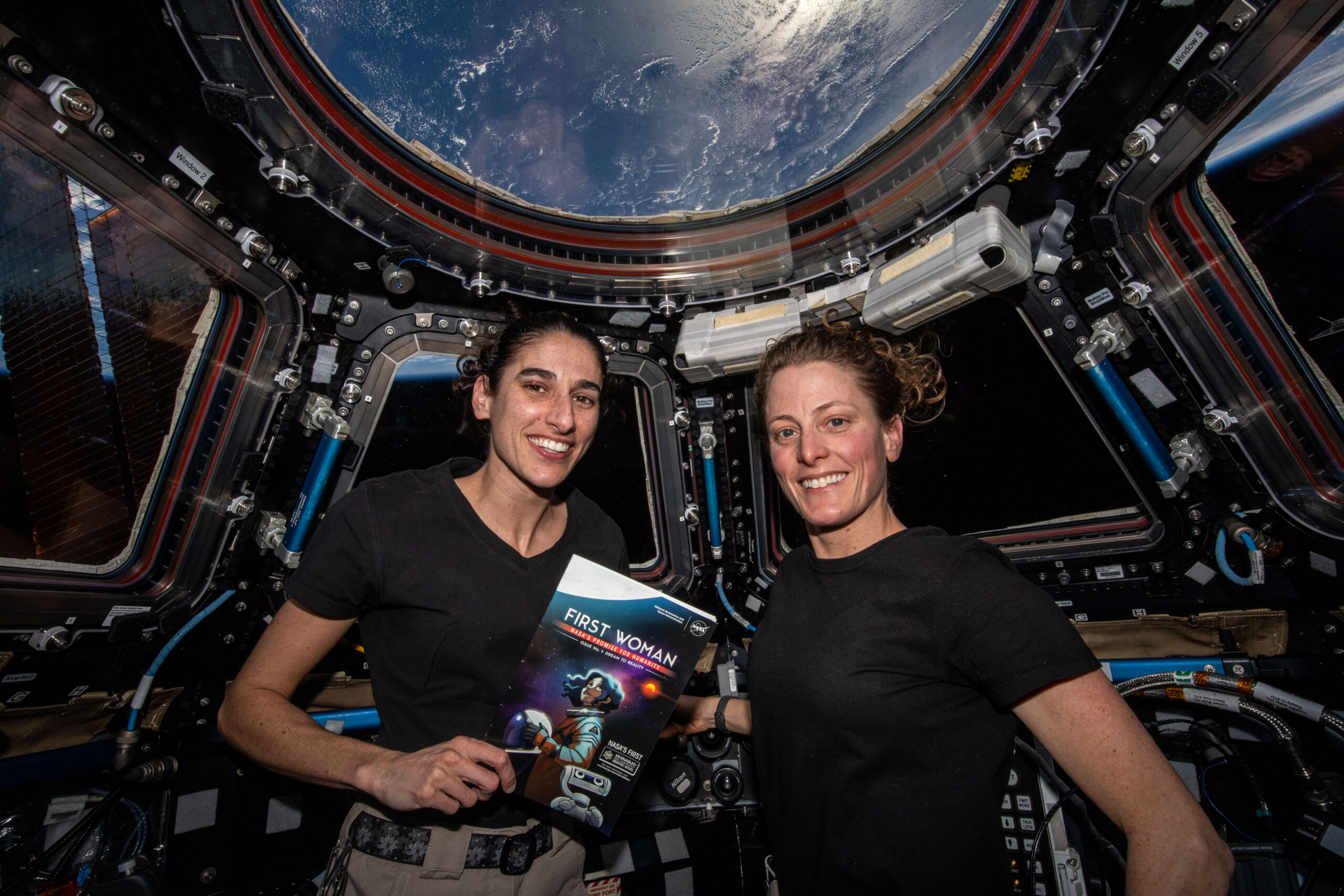
In keeping with tradition, NG-20 honors a deceased figure who played a substantial role in human space exploration. Past honorees included astronauts from Apollo 1 and the final crews of shuttles Challenger and Columbia, together with moonwalkers Gene Cernan, John Young and Al Bean and “Hidden Figures” mathematician Katherine Johnson.
For this next mission, Northrop Grumman offers tribute to Dr. Patricia Hilliard-Robertson, who was selected into NASA’s Astronaut Corps in June 1998 but tragically died following injuries sustained in a private airplane accident in May 2001, before she ever got a chance to fly a space mission. “At just 38 years old at the time of her death, she had already achieved so much,” remembered former astronaut Doug Hurley, who today serves as Northrop Grumman’s director of business development, “and her legacy in medicine, aviation and space exploration continues to inspire generations that have followed.”
Last month, Cygnus’ unpressurized Service Module (SM) completed its final checkouts at Northrop Grumman’s facility in Dulles, Va., and was transported overland to the Space Coast for final pre-launch processing. Meanwhile, the Pressurized Cargo Module (PCM)—built by Thales Alenia Space in Turin, Italy, and delivered to Florida late last summer—was mated to the SM earlier in January, completing a spacecraft which stands 21 feet (6.4 meters) tall and boasts an internal pressurized volume of 950 cubic feet (27 cubic meters).
As its nomenclature implies, a fully successful NG-20 will mark the 20th Cygnus mission to launch and reach the ISS in over a decade and the 21st in total, when one counts an initial demonstration flight, then discounts the catastrophic just-after-liftoff failure of ORB-3 in October 2014. Initially flown under Orbital Sciences Corp. (hence the ORB naming convention), a merger with ATK Thiokol to become Orbital ATK, Inc., produced a new “OA” naming system for missions between December 2015 and May 2018, before Northrop Grumman purchased Orbital ATK and adopted the current “NG” system.
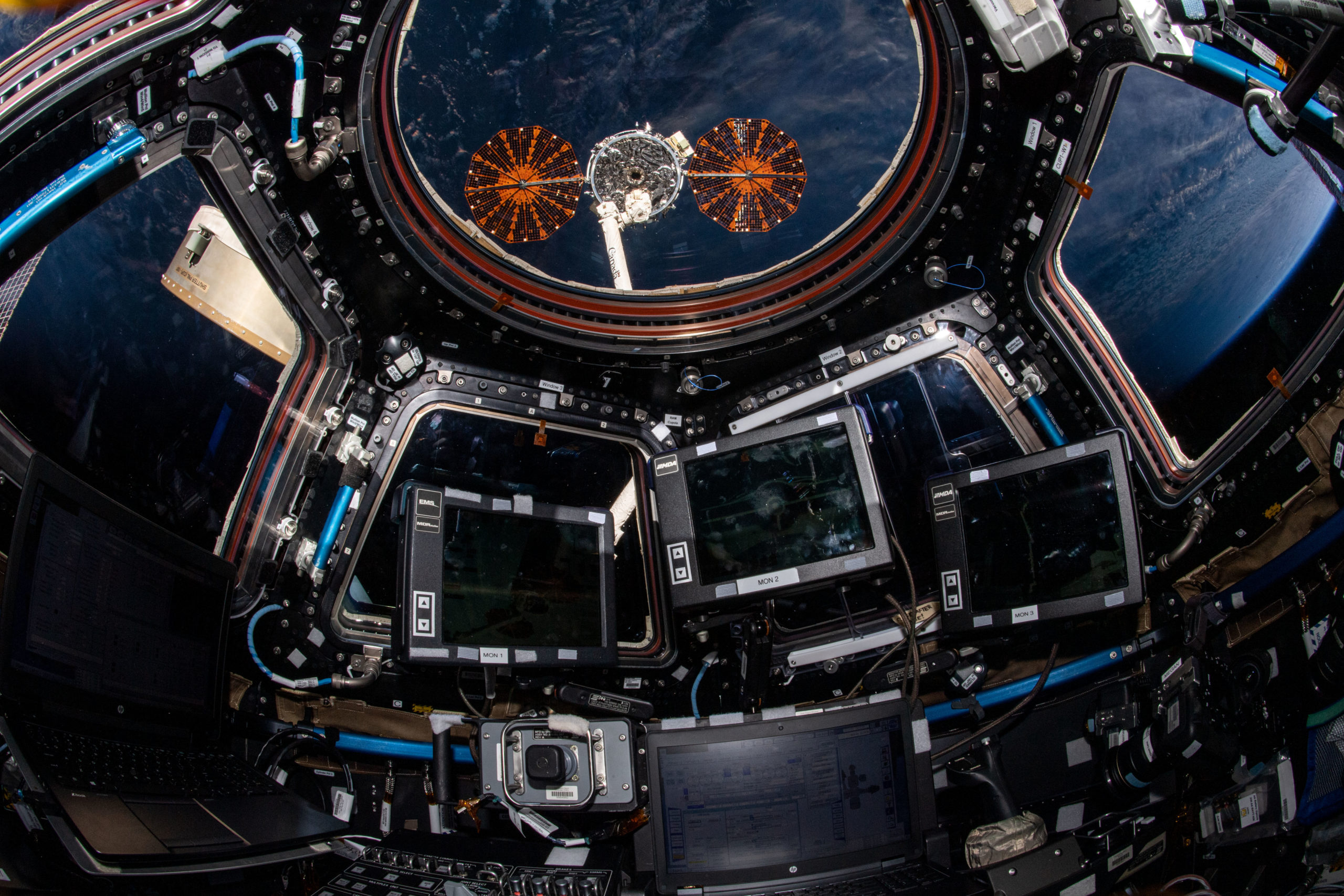
Over more than a decade, Cygnus missions lifted more than 138,000 pounds (62,600 kilograms) of cargo, payloads and supplies to successive ISS crews. And although additional pressurized and unpressurized cargo has also been delivered by SpaceX’s Cargo Dragon, Cygnus remains the only U.S. capability to facilitate a reboost capability of the station’s orbit, with the most recent mission—NG-19, named for NASA astronaut Laurel Clark—having executed a 22-minute and 48-second “burn” last August to raise the ISS operational altitude by 0.3 miles (0.5 kilometers) at apogee and 2.8 miles (4.5 kilometers) at perigee to attain a final orbit of 262 miles (422 kilometers) x 256 miles (413 kilometers) in readiness for future crew departures and arrivals.
And as Cygnus has undergone physical changes and an expansion of capability, its Antares launch vehicle also evolved through several iterations, as Soviet-heritage, Aerojet Rocketdyne-furnished AJ-26 engines were replaced with the Ukrainian-built RD-181. But with the continued supply of the RD-181 thrown into disarray after Russia’s February 2022 invasion of Ukraine, Northrop Grumman contracted with Cedar Park, Texas-headquartered Firefly Aerospace in August 2022 to develop the home-grown Miranda engine for its uprated Antares 300-series booster, originally tracking a mid-2024 maiden launch that has now moved to no sooner than the middle of 2025.
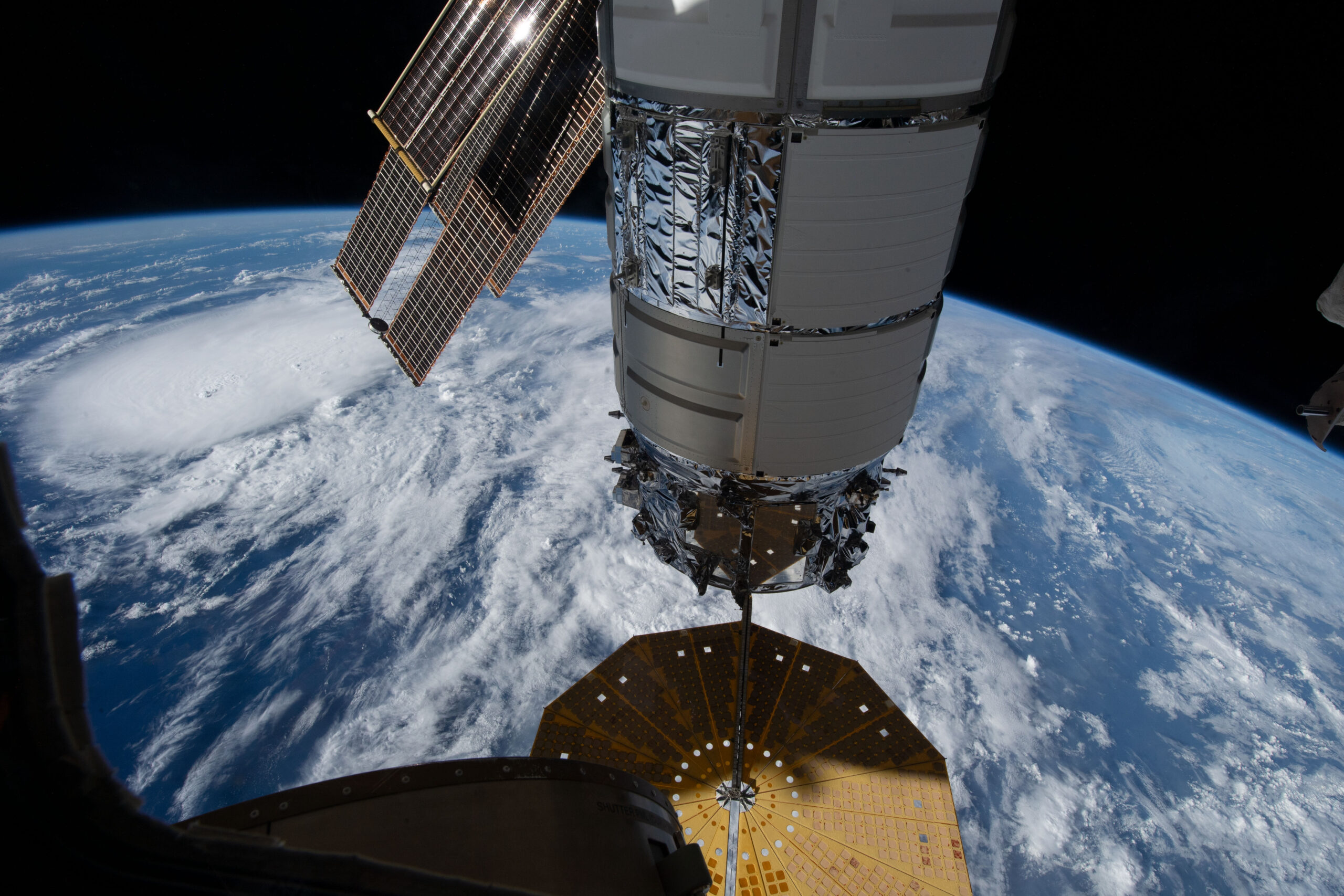
Following the final flight of the RD-181-powered Antares 230+ booster carrying NG-19 last 1 August, a projected gap in launch capability prompted Northrop Grumman to contract with SpaceX to fly three Cygnus missions (NG-20, NG-21 and NG-22) aboard Falcon 9 rockets, before the new Antares 300-series vehicle comes online for the NG-23. This is not the first occasion that a booster other than Antares has launched Cygnus—between December 2015 and April 2017, three United Launch Alliance (ULA) Atlas Vs lofted three cargo missions to the ISS—but Monday’s launch will be the first atop a Falcon 9.
Among NG-20’s haul of payloads is the Robotic Surgery Tech Demo, led by Principal Investigator Scott Tarry of the University of Nebraska at Omaha, which is capable of being remotely controlled or teleoperated from the ground. To be mounted in an Express rack locker aboard the ISS, this miniature surgical robot will conduct simulated surgical tasks to assess the effects of microgravity and time-lag latency upon its activities.
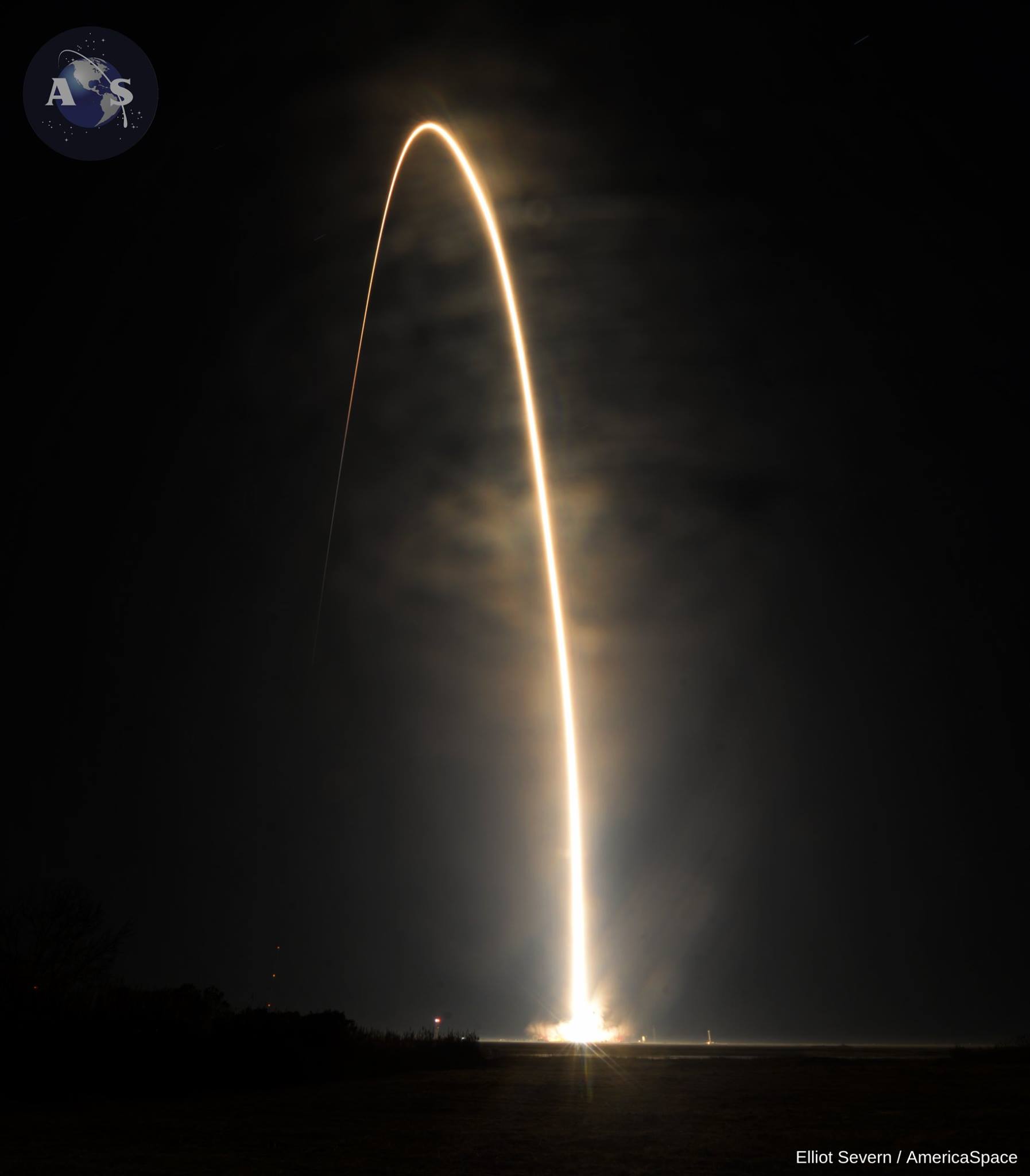
The robot will execute an autonomous subset of surgical tasks independently and a remotely teleoperated mode which will see it controlled by a user from an Earth-based interface. “As longer space missions become more common, the potential need for emergency care increased, including surgical procedures from simple stitching of lacerations to more complex activities,” NASA explained. “Results from this investigation could support development of robotic systems to perform procedures, ensuring the safety of crew members and the success of future missions.”
The Compartment Cartilage Tissue Construct investigation, led by Principal Investigator Yupeng Chen of the University of Connecticut, will demonstrate a pair of technologies—Janus Base Nanomatrix (JBNm) and Janus Base Nanopiece (JBNp)—to grow cartilage tissues in space with the intention of studying cartilage diseases and potential therapies to combat cartilage degenerative diseases, notably osteoarthritis.
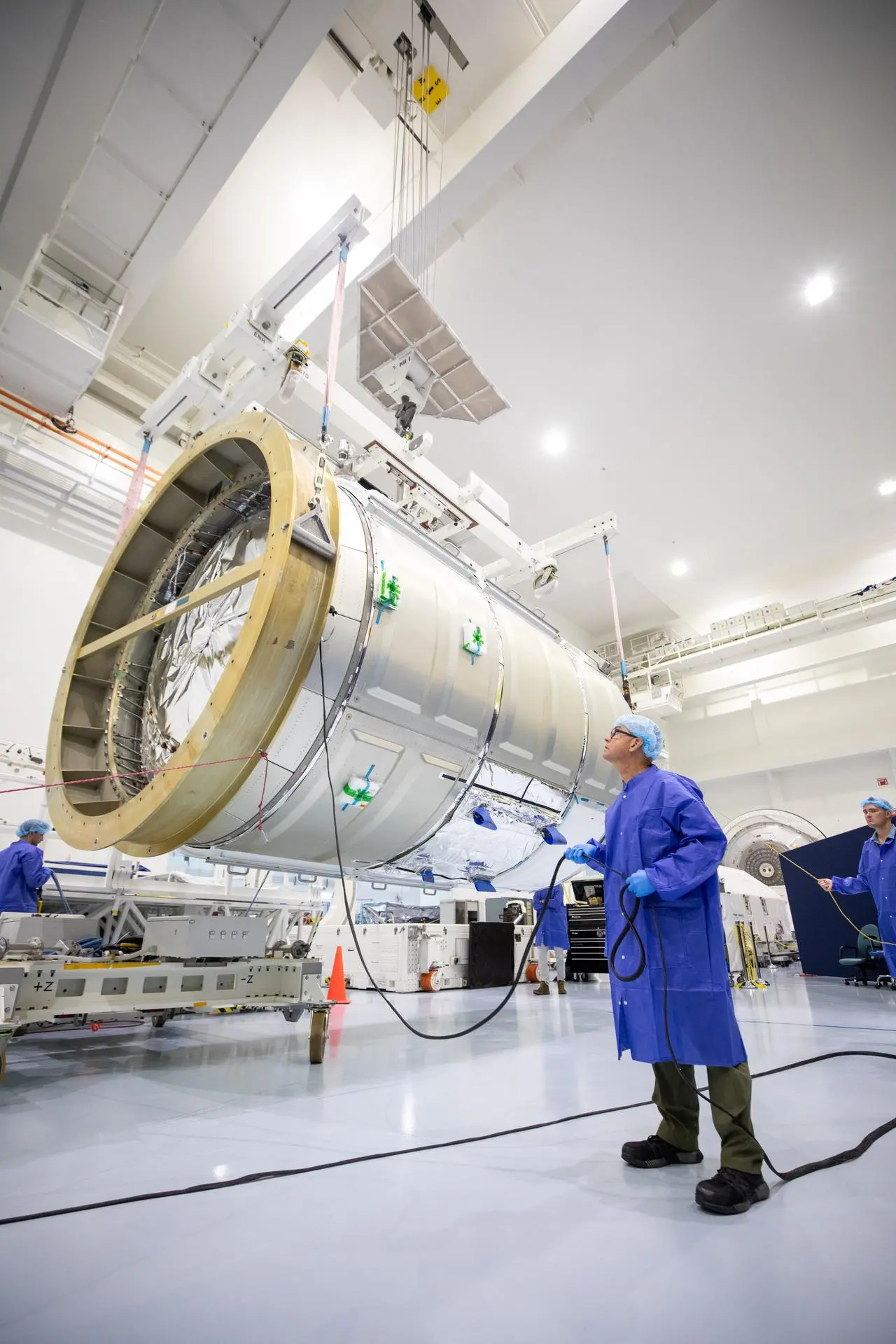
The Kentucky Re-entry Probe Experiment (KREPE)-2 will see three instrumented capsules deployed inside Cygnus at the end of the NG-20 mission to evaluate affordable re-entry technologies. The capsules are outfitted with data-gathering sensors, including thermocouples positioned at various depths within their heat shields, to assess the thermal response during re-entry and transmit directly to orbiting Iridium satellites and from thence to ground stations.
Shortly before Cygnus departs the ISS later this spring, station crew members will remove the capsules, position them in three discrete locations and transition them into a “dormant” state as the cargo ship is loaded with waste materials for disposal. During re-entry, the KREPE-2 capsules will monitor Cygnus’ breakup in the upper atmosphere—evidenced by a temperature “spike” from on-board thermocouples, a specified level of acceleration, a physical detachment from the protective shell or a combination of all three—and continue recording until splashdown in the ocean is detected.
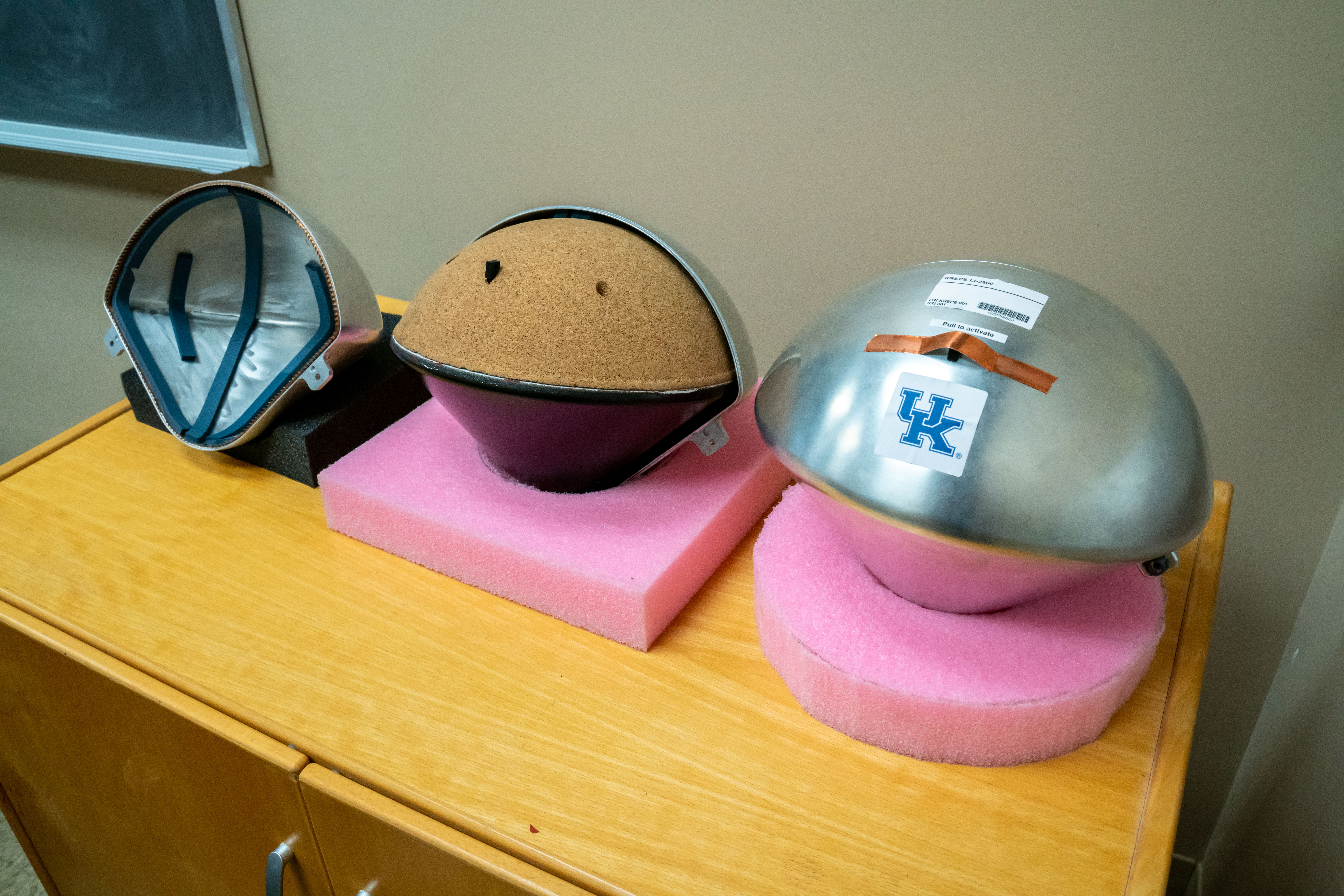
Manufacturing of Semiconductors and Thin-film Integrated Coatings (MSTIC), supplied by Made in Space of Jacksonville, Fla., will seek to produce high-quality, low-cost semiconductor chips for conceptual applications in the electronics industry. “The potential for producing films with superior surface structures and the broad range of applications from energy harvesting to advanced sensor technology are particularly groundbreaking,” said Alex Hayes of Redwire Space, which developed the technology. “This represents a significant leap in space manufacturing and could herald a new era of technological advancements with wide-reaching implications for both space exploration and terrestrial applications.”
Hewlett Packard Enterprise (HPE) will also fly an upgraded version of its Spaceborne Computer-2 (SBC-2) to build upon the accomplishments of two prior incarnations of this commercial, off-the-shelf supercomputing device. An initial test was conducted by SPC-1, which flew to the ISS aboard SpaceX’s CRS-12 Cargo Dragon in August 2017 and returned to Earth aboard CRS-17 in June 2019, logging 656 days aboard the station.
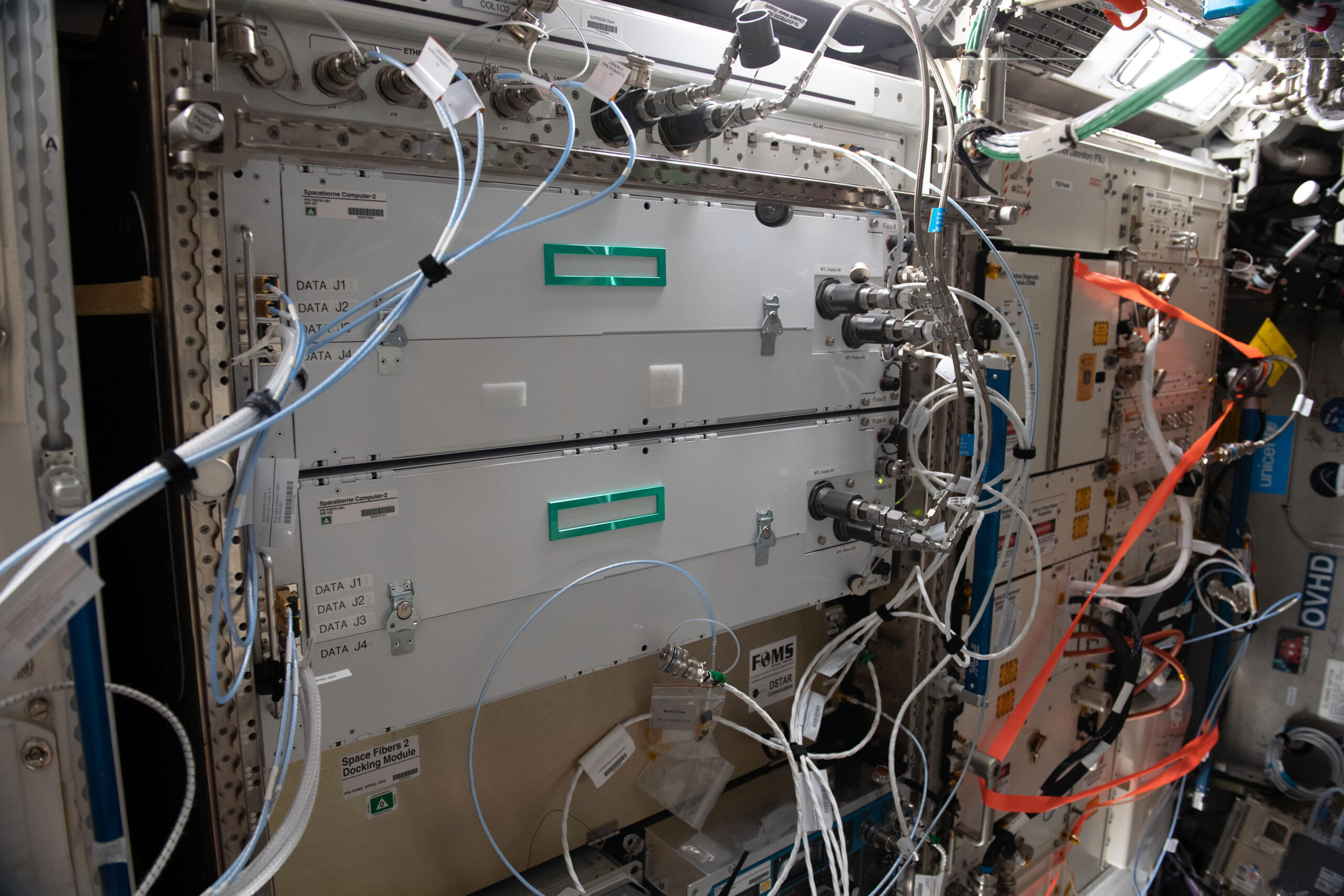
Initially targeted to spend a year on the ISS, the computer’s stay-time was extended an additional eight months and its work supporting ongoing station research, astronaut health monitoring and the processing of Earth observations. SBC-1 achieved a significant milestone when it ran one teraflop—equal to one trillion calculations per second—for the first time in space and by the time of its return home it had flawlessly executed 53,936 runs during 9,562 Earth orbits and 6,879 crossings of the high-radiation South Atlantic Anomaly (SAA).
The upgraded SBC-2 flew for the first time between February 2021 and January of last year, spending 686 days aboard the space station. For the first time, it took full advantage of on-board artificial intelligence and high-performing computing capabilities and trialed functionalities to recover and mitigate transient memory defects and errors.
“The Spaceborne Computer has the potential to not only accelerate data processing in space, but also speed up the exchange of data insights between Earth and space,” said Principal Investigator Mark Fernandez. Equipped with highly radiation-tolerant flight software, for its third mission the supercomputer features KIOXIA flash-memory storage to test storage and recovery on long-term future missions.
And the European Space Agency (ESA) is providing its 3D Metal Printer to test additive manufacturing or 3D-printing or small metallic components to examine their functionality, performance and operations, as well as their quality, strength and characteristics. Three-dimensional printing carries great potential for creating parts for maintaining equipment on future long-duration missions or deep-space expeditions to the Moon and Mars.




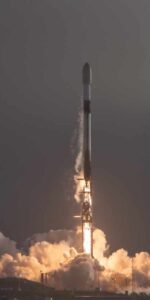
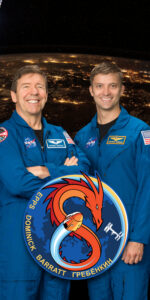
6 Comments
Leave a Reply6 Pings & Trackbacks
Pingback:SpaceX Targets Three Days of Falcon 9 Launches, Starting Tonight - AmericaSpace
Pingback:SpaceX Targets Three Days of Falcon 9 Launches, Starting Tonight - SPACERFIT
Pingback:SpaceX Targets Three Days of Falcon 9 Launches, Starting Tonight - AmericaSpace - Newsivo: Where News Comes Alive
Pingback:SpaceX Flies Back-to-Back Falcon 9 Missions, Looks to Month-Ending Tenth Launch Tomorrow - AmericaSpace
Pingback:SpaceX Flies Back-to-Back Falcon 9 Missions, Looks to Month-Ending Tenth Launch Tomorrow - SPACERFIT
Pingback:After Daylong Delay, NG-20 Cygnus Launches, Heads to Space Station - AmericaSpace